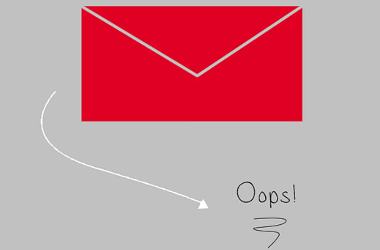
7 common mistakes to avoid in official emails!
Life seems all about taking the short cuts until you’re in college. Enter corporate world and you will never write things the informal way. Most people would say that all those years of formal letter writing practice at school has made you a pro in writing official emails and you do not need a crash course in it. Think again. Or better yet, scroll through the list below to check how many of the common mistakes you still make when you write official emails. They can do more harm than you can think of. They show you as unprofessional and lacking common mannerism of a well communicating and worthy employee.
When you send official emails, you need to stay reminded that you will be judged based on how you write and how experienced you are at it. These are some common mistakes you would know better to avoid if you love that job of yours and want to keep it:
1. Avoiding greetings: One of the most common mistakes that people make in official e-mails is avoiding greetings and proper endings. It gives the impression that you are too absorbed in your own thoughts to bother greeting or offering courtesy to the sender. Simple pleasantries but leaving them off sends a bad impression. Jumping straight to the body of the email while sending an email to someone in a senior position makes you sound rude and careless.
2. Grammatical errors: Being fast forward in official emails isn’t wrong but making grammatical errors are forbidden. Not only are they unprofessional but sends out the impression that your communication skills are not your strongest assets and you did not take this email seriously. Go through the email carefully after finishing it and make the required corrections.
3. Changing through lines: Do not in any case write an official email in a single go. Remember to change through paragraphs when subject line changes. Write in points if there are multiple subjects. It makes the email look clean and easy to understand.
4. Being too formal or overly courteous: It is agreed that official emails are to be written in formal tone but making it too formal makes you appear to be someone who isn’t easy to talk with. Being friendly and approachable to people you are working with is important.
Similarly some people have a typical habit of being over polite. This at time goes to the extent that the other person actually feels irritated with your overly sugarcoated tone.
Wrong: Kindly please look at the attached file.
Right: Can you please look at the attached file?
5. Leaving out courtesies: A simple gesture of courtesy like the usage of words please, kindly, Thank You is important. People miss out on them unknowingly but the fact that they are important in official emails remains constant. The other person can’t see your expressions and gestures; they only make out what your words read. Leaving out courtesies makes you sound rude and arrogant.
Wrong: Do this again and send me the details.
Right: Please do this again and revert with the details.
6. Improper tones: The person on the receiving end isn’t aware of your expressions and mood but an email written in the proper tone suited with the situation should give the right impression that you mean business. If you are going to be strict, your words should imply that. If you are going to be sweet do just the right amount of sugarcoating.
Wrong: There is no way we are going to do this your way unless it is in the best interests of our company.
Right: We are sorry to let you know that we cannot do this in your proposed way unless you change your proposal to meet our interests.
7. Abbreviations: One big mistake that people unknowingly make is the usage of shortcuts and abbreviations. It is the number one rule of formal writing that abbreviations be avoided wherever required. You don’t want to appear as someone who is too busy to pay heed to the common ethics of conversation via emails. Moreover, you can’t expect all the readers to know all; the abbreviations. Using them in your emails means that you cut down the communication level of your email.